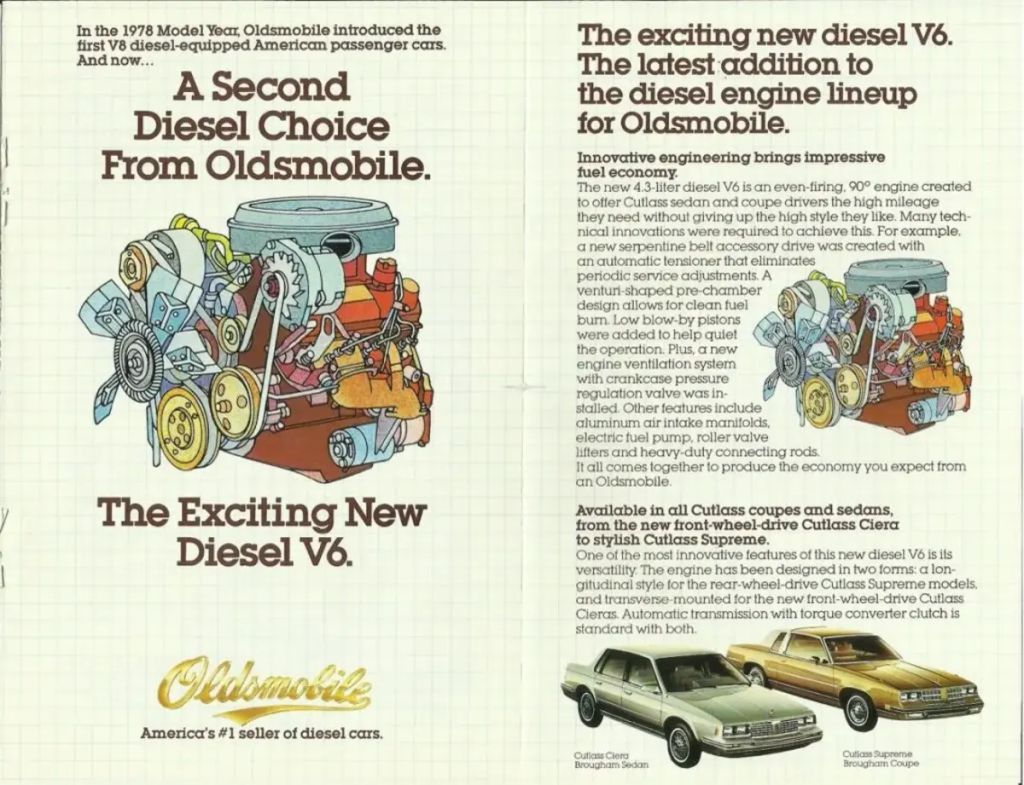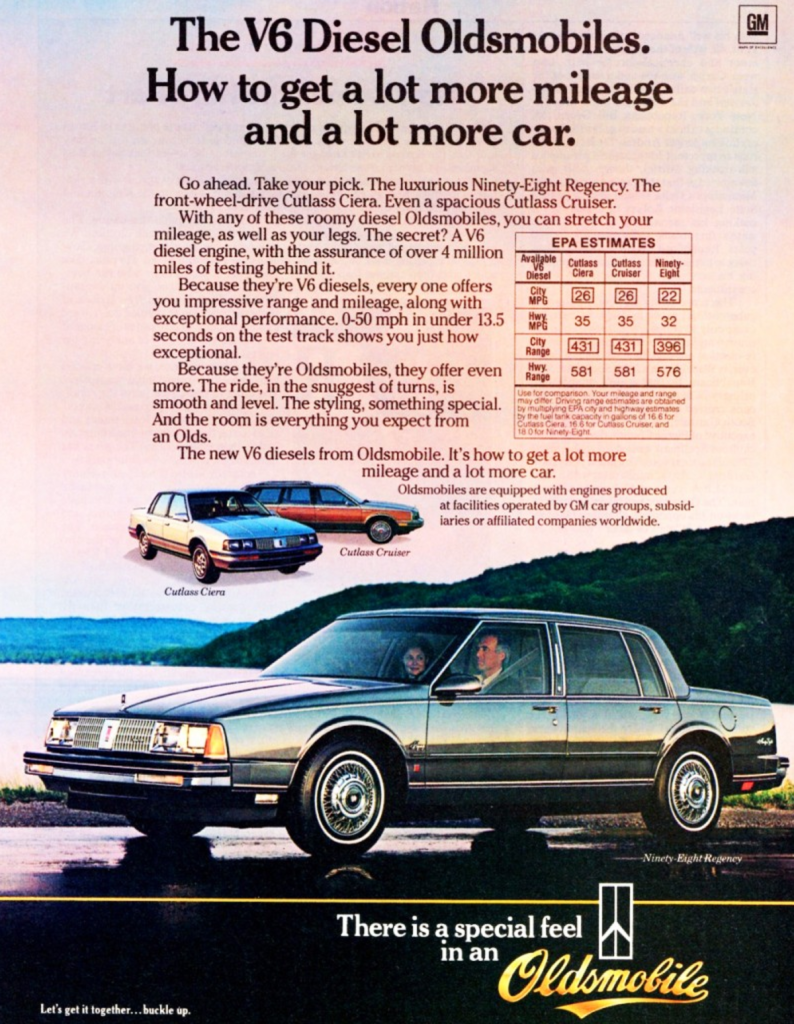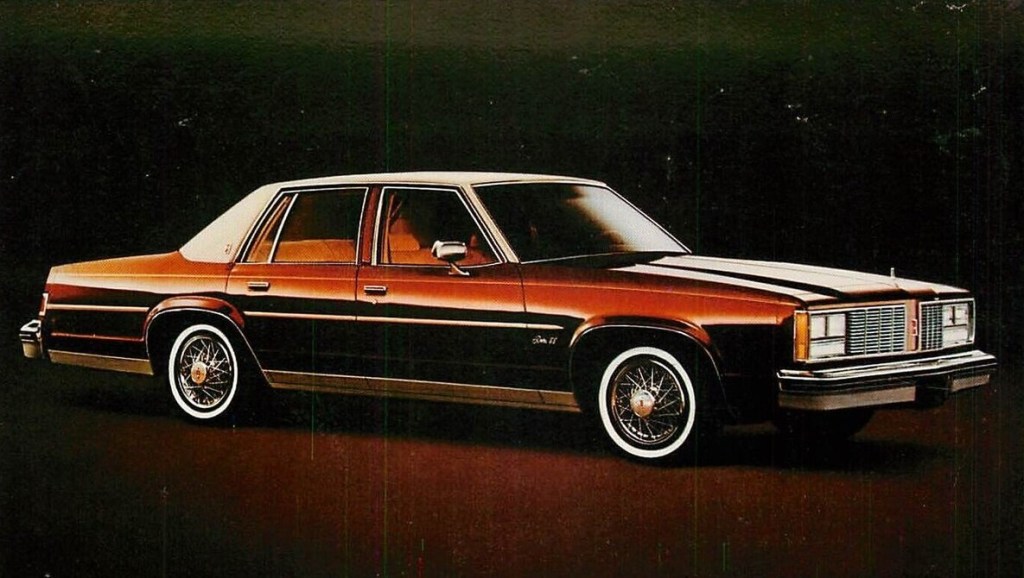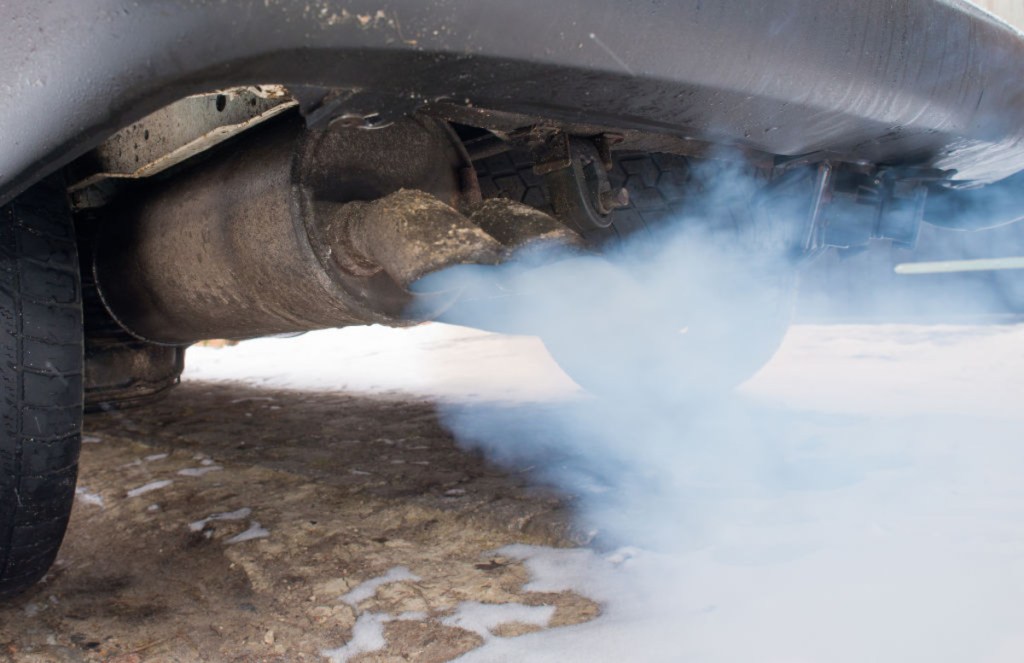
The Oldsmobile Diesel Disaster
“I can do it fast, good, or cheap; pick two.” That‘s known as the “iron triangle” in the project management world. General Motors was in business for more than enough years to understand that mantra all too well. And yet, when it came to diesel engine development, it all went out the window. The late-1970s and 1980s Oldsmobile diesel debacle fell squarely into the cheap and fast category. And as sure as the iron triangle doesn’t lie, Oldsmobile ended up with one of the worst engines ever created.
Things moved fast at the General in the late-1970s and 1980s

Things were moving fast at the General in the late-1970s and 1980s. Foreign auto manufacturers were bombarding the U.S. with better vehicles. The result was GM losing market share like it had never seen. Suddenly, everything was explored for potential upsides. That included Mercedes Benz’s success with diesel-powered sedans. GM wanted to blunt that success, and Oldsmobile was chosen to lead the charge.
On a tiny budget and with a very short timeline, Olds engineers created the first GM diesel for passenger cars. To cut time and costs, it was mandated the block would be the same bore and stroke as the Olds 350 ci gas engine. This was so tooling for the gas engine could work for the diesel as well. Time and money saved!
One of the main differences between gas engines and diesel is the higher cylinder pressures needed to ignite the diesel fuel. That means the diesel block needs to be robust, and the cylinder heads supported so they don’t move around. But, again, in an effort to save time and tooling costs, the bean counters insisted on the same 10 head-bolt pattern and the same bolts as those for the 350 ci gas engine.
Another idiotic diesel mandate included no water separator

As diesel compression ratios are three times those of gas engines, imminent disaster was only “when” not “if.” Another idiotic move was no water separator, despite water being commonly found in much of the diesel fuel storage of the time.
The goodness of diesel engines is mileage and range. Proclamations of 30+ highway mpg with 700 miles between fill-ups exploded onto Olds diesel advertising. In a 1978 Olds Delta 88 with the LF9 diesel engine, the merits were commendable. And, were it not for what was to follow, these were great advantages to diesel driving.
When it came to testing, the bench time was cut extremely short. One of the discoveries from that was the engine block needed to be supported so as not to explode in the first few thousand miles. Bean counters were cheap, but they knew how costly warranty work was.
Could the diesel engines handle sedans with 5,000 lbs?

In the end, what the engineers wrought was a 120hp 220 lb-ft of torque Whizzer motor. These were going into big Oldsmobile sedans weighing close to 5,000 lbs. Taxed beyond their capabilities, the engines were always on full throttle. But there was more to come.
Immediately, unwitting customers found head gaskets blown, leading to water entering the engine oil with quick disintegration of the engine. Blown gaskets caught in time were only one blown head gasket away from destruction, as the head bolts were the same inferior bolts as used for the gas-powered 350s. With no water separators, fuel pumps failed on a regular basis as well. One “fix” was dumping alcohol into the gas tank. It fixed the water problem, but soon seals in the fuel system were cooked.
Then there was the transmission. Having nothing to do with the mounting engine failures, it was sourced from GM’s compact car program. A three-speed automatic, it couldn’t handle the weight and demands of the underpowered diesel dynamics. All of these failures and inconveniences could almost have been tolerated except for one thing.
Smells, noise, and smoke dump were especially prevalent

If you’ve ever been behind an old diesel bus, you know that smell, noise, and smoke dump. All were especially prevalent with the Olds diesel. With the combination of poor performance, failures, and these bad characteristics, it was a diesel disaster beyond imagination.
At its peak, GM’s LF9 diesel was found in almost 30 different models. These spanned virtually every car division within GM. For a time, it was the only engine you could order for a Cadillac Fleetwood limousine. So this most expensive, top-of-the-line GM car was stuck with this turd until after 1985.
This still haunts GM’s image as the schlock-maker 40 years later
Though GM finally had some success with a V6 diesel years later, it cast a pall over all diesel engines for decades. And the aftermath still haunts GM 40 years later. Oh, for sure there were other examples to hang around GM’s neck, but this was right up there with Cadillac’s 4-6-8 engine.
GM wasn’t alone in its diesel folly. We’ve already featured Lincoln’s equally disastrous foray into diesel darkness. For many different reasons, it too failed miserably, in spite of using an established BMW diesel engine. Detroit can go down rabbit holes beyond normal rationality. It’s what makes for so many Worst Car Wednesdays.
Related: Worst Car Wednesday: 1984 Just Puked Coal At Your Door
Updated: 6/9/2023



